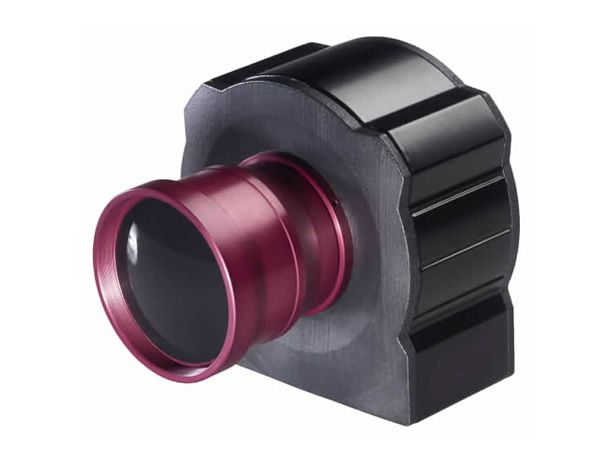
Uncooled MWIR 128x128 pixels infrared camera with high-speed frame rates up to 4000 frames per second. Configurable ROI windowing (allows faster frame rates)
Features
Uncooled MWIR 128x128 pixels infrared camera with high-speed frame rates up to 4000 frames per second
Configurable ROI windowing (allows faster frame rates)
Maximum added value and affordability to ensure a full integration in the industry 4.0 applications
Multiple industrial applications: machine vision, laser process monitoring, gas detection, QA
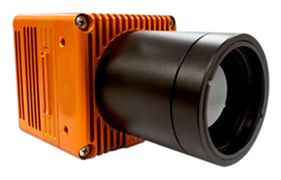
Typical Applications
Additive manufacturing
Industrial process monitoring
Machine vision
Gas and flame detection
Spectroscopy
Glass manufacturing quality assurance
R&D industries
Automotive industry
Home appliance manufacturing
Metallurgy and steel industry
Petrochemical industry
Glass manufacturing industry

Specifications
Detector type: VPD PbSe FPA with digital interface, uncooled operation
Array format: 128x128 (16384 pixels)
Pixel size: 50x50um (square format)
Spectral range: MWIR, 1.0μm to 5.0μm
Peak wavelength of detection: 3.7microns
Integration time: 10-1000μs, selectable
Raw data communication, 14 bit
Interfaces: GigE version2.0 (GenICam compatible) with PoE; Multipurpose DI/DO connector (trigger IN/OUT) (cable sold separately)
Maximum frame rate: 4000fps
ROI windowing function
Mechanical shutter for 1-pt offset correction
Start-up time: < 10 seconds
Power supply: PoE, 8 W (non-PoE operation requires 12 VDC)
Metal housing with rear connectors and tripod screw holes (M3 and M4)
Dimensions and weight (w/o optics): 66(L)x62(W)x62(H)(mm), 400 grams
Optics (standard option): f=35 mm, F#1.1, FoV 10.5ºx10.5º, AR coating (1-5μm), manual focus with CS-mount interface
Software included: acquisition and visualization SW; SDK available for custom software programming
Minimum temperature of detection: 100ºC
| Part number | STN-16K | STN-16K+ |
| Maximum frame rate | 2000 images per second @ 128×128 Allows higher frame rates using embedded ROI windowing functions | 4000 images per second @ 128×128 Allows higher frame rates using embedded ROI windowing functions |
| Windowing modes | 128×128 64×64 (center of FPA) 32×32 (center of FPA) 1×128 (center of FPA) | Size and position of the ROI: configurable via SW |
| Acquisition mode | 128×128: Interlaced mode 64×64, 32×32, 1×128: Snapshot acquisition | All modes: Snapshot acquisition |
| NUC correction tables | Software correction | Hardware correction (4 tables stored) |
| Data transmission modes | RAW data, 14 bit | Selectable: – RAW data, 14 bit – NUC corrected, 16 bit – High-speed mode RAW/NUC: 12bit |
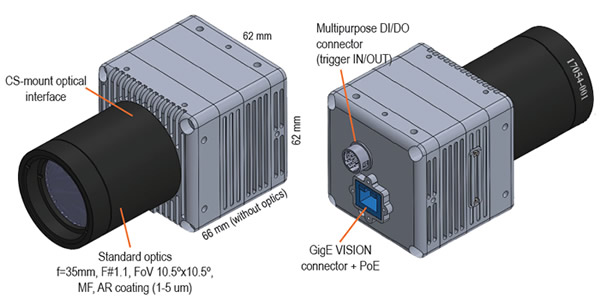
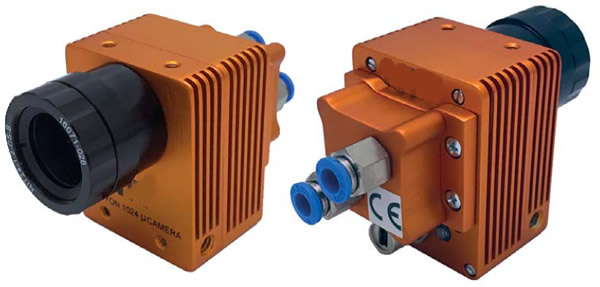
Features
Uncooled MWIR camera IP67-rated with industrial USB connection and 1 kHz frame rate
Optimized size and affordable cost to ensure a perfect integration in the production process: priced for cost sensitive machine vision applications!
Applications
Industrial manufacturing process control (welding, cutting, etc.)
Industrial automation
Laser process monitoring
Gas and fl ame detection
Machine vision
OEM integration
Industries
Automotive industry
Home appliance manufacturing
Metallurgy and steel industry
Glass manufacturing
Petrochemical industry
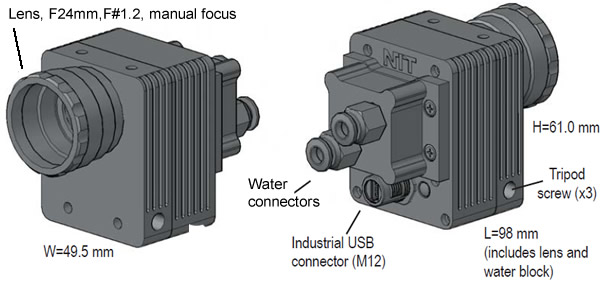
Specifications
Part number: STN-1024
Miniaturized uncooled infrared MWIR camera for industrial applications
Band of detection: MWIR (1 - 5 microns)
Peak wavelength of detection: 3.7 microns
FPA resolution: 32x32 (1024 pixels)
Shutter incorporated for 1-pt offset correction
Integration time: adjustment via software (100 – 500 us)
Maximum frame rate: 1000 Hz (slower rates are possible)
Global-shutter (snapshot) image acquisition
Electrical interface: USB powered, industrial M12 mini-USB connector in the back (optional: connector in the bottom part)
Communication interface: USB 2.0, high-speed (up to 480 Mbps)
Data transmission: raw data, 10 bits
Lens: f=24 mm, F#1.2, FoV 10.2ºx10.2º (IP67-rated)
Optional lens: f=48 mm, F#1.6, FoV 5.1ºx5.1º (IP67-rated)
Integrated temperature sensor
Dimensions (in mm): 98.0 (L) x 49.5 (W) x 61.0 (H) (connector in the back)
Weight: 250 grams
Minimum temperature of detection: 100 ºC
IP67-rated metal housing with CS-mount optics interface
Water-block and DLC coating for harsh environment
Software included: NIT SOFTWARE SUITE (Acquisition and visualization SW)
DLL for custom software development available
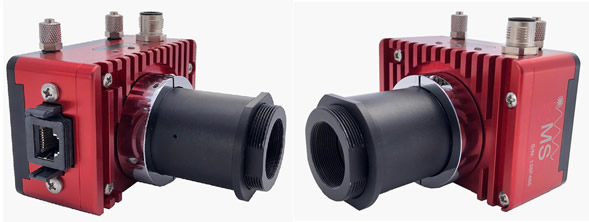
Inline infrared imaging monitoring system for industrial process monitoring
Continuous monitoring and measurement of the melt pool and heat-affected-zone (HAZ) geometry
Ensures quality monitoring
Allows coaxial integration and off-axis operation
Standalone operation
2-alarm levels configuration, PC data ogging
Main applications: laser welding, LMD, cladding, WAAM, others
| Part number | STN-I3MS |
| Components | Infrared camera with real-time processing electronics and waterblock connection box, multi I/O cable (3 m), power supply (24 VDC) Software package for system configuration, datalogging and log files analysis Infrared emitter for optical calibration |
| Process compatibility | Laser and arc welding, LMD, cladding, WAAM, others |
| Mechanical integration | Coaxial & off-axis operation |
| Laser optics compatibility (coaxial integration) | Transmission of infrared signal (above 1.1 um) from the process area to the optical port is required |
| Output | Analog signal output (0 VDC - 10 VDC) proportional to width of melt pool / HAZ Configurable span |
| Dimensions (mm) | Infrared camera: 88 mm x 60 mm x 92 mm Connection box: 124.5x102x28mm |
| Weight | 0.5 kg |
| Power supply | 24 VDC, 6 W; Power supply included |
| Imaging lens | CaF2, f=50 mm, F#2.25 with manual focus mechanism (other focal lengths available) |
| Mechanical enclosure (camera) | IP67 rated mechanical enclosure with embedded heatsink Embedded waterblock for air /water cooling |
| Mechanical interface (front side of optics) | C-mount thread with counter thread for tight adjustment |
| Field of view Resolution per pixel | Coaxial: dependent on the optical system installed in the laser optics Offaxis: FoV=3.7ºx3.7º (focal length f=50 mm) |
| Infrared camera | VPD PbSe camera, 64x64 pixels (pixel size: 50 microns) MWIR response (1 -5 um), frame rate 1000 images per second |
| Communication interface | Gigabit Ethernet (RJ-45) |
| Software | Acquisition and Configuration SW v.1.0; Visualization SW v.2.1 |
| Minimum requirements | PC with processor i5, RAM memory: 8 GB Hard disk available: 1 GB, O.S.: Windows 10 or later (32/64 bits) |
| Process monitoring configuration | Selectable configurations: manual, tracks, continuous track length (tracks mode), alarm levels, alarm delay laser ON delay & auto detection |
| Indicators | Melt pool / HAZ width, Infrared image, laser status, alarm (2 configurable alarm levels) |
| Other features | Laser ON/OFF digital input (opto-coupled) Monitoring alarm digital output (opto-coupled),process data logging, circular & rectangular region-of-Interest (ROI) |
| Accessories | 3-color light pole indicator |
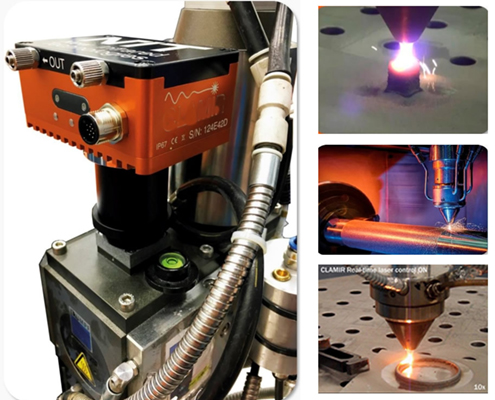
Continuous monitoring and measurement of the melt pool geometry
Closed-loop control of the laser power during the complete process, ensuring quality and repeatibility
Compatible with most of laser optics and powders
Easy mechanical integration and quick configuration
Consistent operation, no need of reconfiguration during the process
Main applications: LMD and cladding
| Part number | STN-C |
| Components | Infrared camera with real-time processing electronics and waterblock connection box, multi I/O cable (3 m), power supply (24 VDC), software package for system configuration, data logging and log files analysis, infrared emitter for optical calibration |
| Process compatibility | LMD process (Laser Metal Deposition) cladding |
| Optical compatibility | Transmission of infrared signal (above 1.1 um) from the process area to the optical port is required |
| Material compatibility | Steel powder, Stainless steel powder, Stellite powder, Inconel, others |
| Laser power control | Analog signal output for laser power control, 0-10VDC |
| Dimensions (mm) | Infrared camera: 88x60xmm connection box: 124.5x102x28mm |
| Weight | 0.5 kg |
| Power supply | 24VDC, 6W, power supply included |
| Imaging lens | CaF2, f=50mm with manual focus mechanism (other focal lengths available) |
| Mechanical enclosure (camera) | IP67 rated mechanical enclosure with embedded heatsink Embedded waterblock for air /water cooling |
| Mechanical interface to laser optics | C-mount thread with counter thread for tight adjustment |
| Field of view Resolution per pixel | Dependent on the optical system installed in the laser head and diameter of the noozle |
| Infrared camera | VPD PbSe camera, 64x64 pixels (pixel size: 50 microns), MWIR response (1-5 um), frame rate 1000 images per second |
| Communication interface | Gigabit Ethernet (RJ-45) |
| Software | Acquisition and configuration SW v.2.0; Visualization SW v.2.1 |
| Minimum requirements | PC with processor i5, RAM memory: 8 GB; Hard disk available: 1 GB, O.S.: Windows 10 or later (32/64 bits) |
| Process control | Selectable modes: automatic, manual |
| Process configuration | Selectable process configuration: tracks, continuous, initial laser power, track length (tracks mode) laser ON delay & auto detection, feedback control parameters |
| Indicators | Melt pool width, laser power, infrared image, laser status |
| Other features | Laser ON/OFF digital input (opto-coupled); Monitoring alarm digital output (opto-coupled); Process data logging, Circular & rectangular region-of-interest (ROI) |
STL series MWIR camera is developed with resolution 640x512pixels, wavelength range 3.7~4.8um, standard CL connector, supporting standard analog PAL video and external trigger. The camera is Stirling refrigerator cooled and provides with 14bit and 117Hz output.
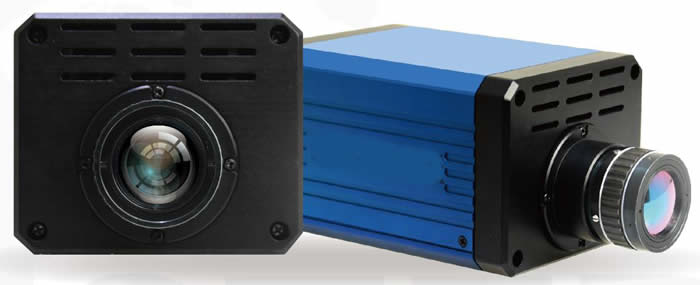
Digital image detail enhancement (DDE)
Low noise
14bit digital signal output
High stability, adapt to harsh environment
Short delivery time
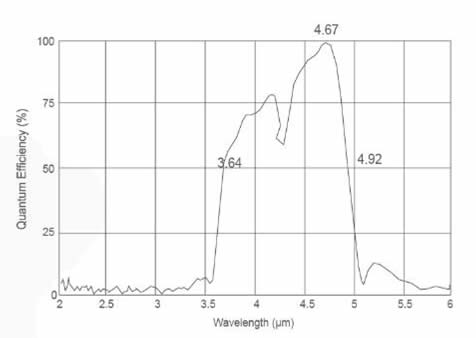
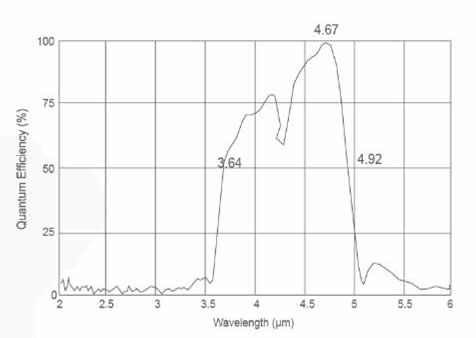
The pictures on the right are the images with digital image detail enhancement (DDE turned on).

| Part number | STL-M640 | |
| Imaging | Detector | FPA MCT |
| Resolution | 640x512 | |
| Wavelength range | 3.7~4.8um | |
| F number | F2 | |
| NETD | 18mk | |
| QE | >70% | |
| Image cell | 15x15um | |
| Frame rate | 117Hz | |
| ROI | Window for higher frame rate | |
| Cooling | Striling refrigeration, lifetime 6000h; cooling 5min @ room temp; 8min @60oC | |
| Electrical | External trigger | TTL |
| Data port | Standard CL port, PAL | |
| Data output | Minicamera Link, digital, image AD16bit, ready for 14bit output | |
| Communication | RS422 series | |
| Input power | 24VDC, 30W@25 oC normal status | |
| Others | Weight | 3kg not incl. camera lens |
| Dimension | 222x117x98mm | |
| Operation temp. | -40 to +70oC | |
| Store temp. | -45 to +75 oC |
A leading supplier and manufacturer of a wide range of photonics products such as lasers,laser parts & machines.
Office: 10 Bukit Batok Crescent #07-02 The Spire Singapore 658079
Tel: +65 63167112
Fax: +65 63167113
Whatsapp: +65 91904616
